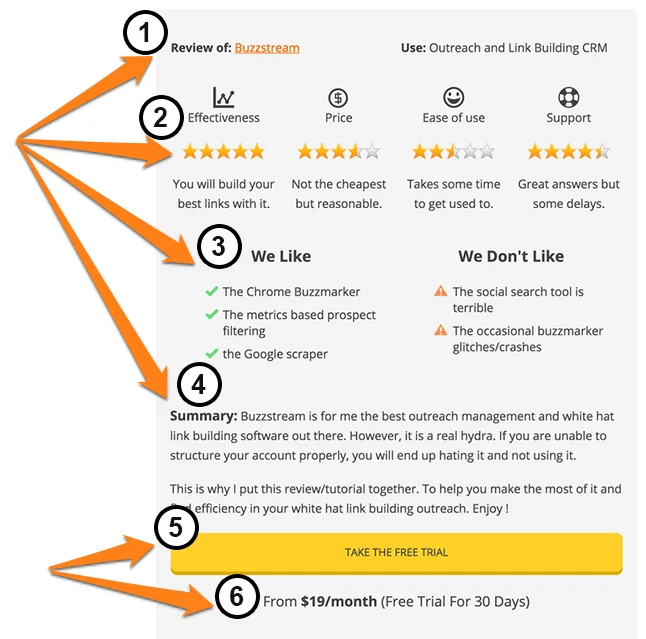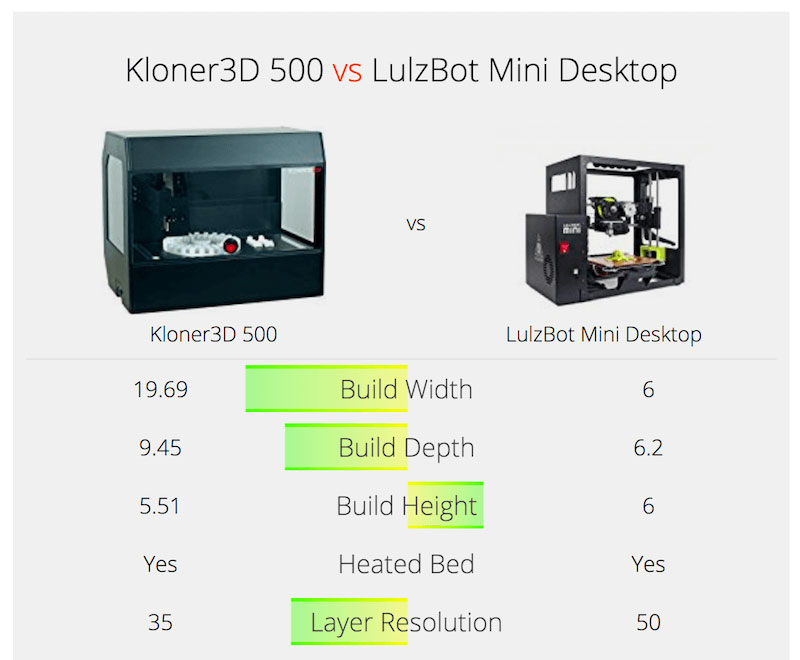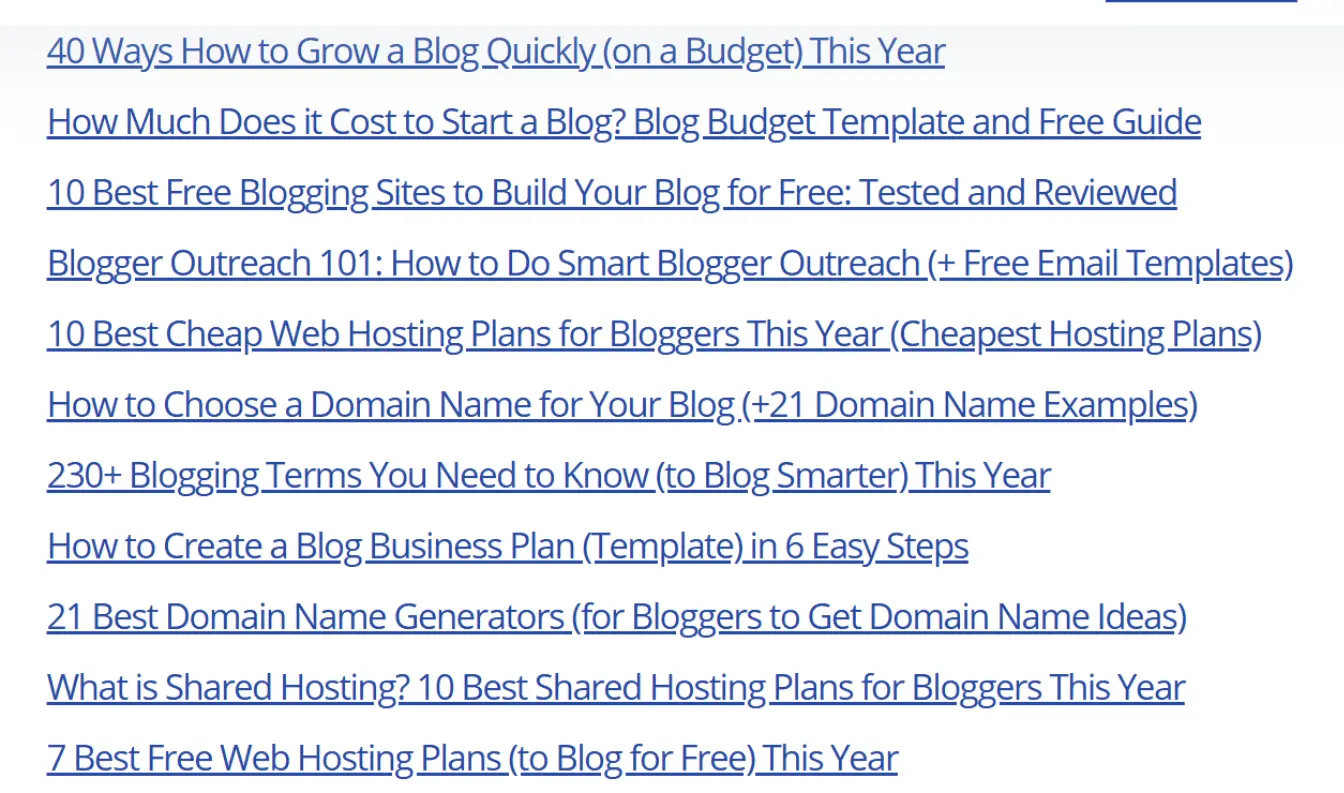Why Valuable Content Wins in Affiliate Marketing (And How to Create It)

Affiliate marketing works best when people trust your recommendations. But trust isn’t built by spamming links or pushing products—it comes from creating valuable content that helps your audience.
Think about it. Would you buy something just because a stranger told you to? Probably not. But if someone explains how a product solves your problem, shows proof, and shares personal insights, you’re more likely to take action. That’s the power of valuable content.
Many new affiliates focus on selling instead of helping. They flood social media with links, hoping for quick sales (I actually did this before). But this approach rarely works long-term. The affiliates who see real success are the ones who create content that informs, educates, and genuinely helps their audience.
In this article, I’ll show you why valuable content outperforms aggressive selling every time. You’ll learn what makes content truly valuable, how to create it, and the best ways to use it to drive traffic and conversions. Let’s get into it.
What Is Valuable Content in Affiliate Marketing?
Valuable content in affiliate marketing goes beyond promoting products. It provides real information, solves problems, and engages the audience. Instead of pushing a sale, it helps people make informed choices. When content is useful, people trust the source, return for more, and eventually take action on recommendations.
How Value Builds Trust and Long-Term Relationships
Trust is the foundation of affiliate marketing. If people believe your content is biased or purely sales-driven, they’ll ignore it. But when you offer real insights, they see you as a reliable source.
Here’s how valuable content strengthens relationships:
- Consistency: Regular, high-quality content keeps people engaged and coming back.
- Honesty: Genuine reviews, balanced comparisons, and transparency build credibility.
- Problem Solving: Content that answers common questions or simplifies complex topics earns trust.
The more people trust your content, the more likely they are to follow your recommendations.
Examples of Valuable Content vs. Sales-Driven Content
Not all content is created the same. Valuable content educates and informs, while sales-driven content focuses only on conversions. Here’s the comparison:
| Valuable Content | Sales-Driven Content |
|---|---|
| In-depth comparison of two tools with pros, cons, and real user experiences | A generic sales pitch pushing one product without real insights |
| A tutorial showing how to use a product effectively | A short post saying “Buy this now” without any helpful details |
| A case study with real results from a product | A vague claim without proof or explanation |
| A blog post solving a specific problem related to the niche | A promotional page listing product features without context |
Remember, affiliate marketing isn’t about selling—it’s about helping. The best affiliate marketers focus on delivering value first, knowing that trust leads to conversions. If your content educates, informs, and engages, sales will happen naturally.
The Role of Trust and Authority in Affiliate Marketing
People don’t buy from just anyone. They buy from sources they trust. In affiliate marketing, trust separates those who make consistent commissions from those who struggle to get clicks. The more authority you build, the easier it becomes to influence buying decisions without resorting to aggressive sales tactics.
Why People Buy from Trusted Sources
Think about the last time you bought something online. Did you click on the first link you saw, or did you look for reviews, comparisons, or recommendations from someone you trust? Most people won’t spend money unless they feel confident in their decision. That’s why trust matters.
People are more likely to buy from you if they see you as knowledgeable. If you consistently share helpful insights, your audience will naturally view you as an expert.
Credibility is built over time. Honest recommendations and transparency make people trust your advice. If they feel like you genuinely want to help, they’ll follow your guidance instead of seeing you as just another marketer trying to make a sale.
A trusted affiliate marketer doesn’t just push products. They help people make informed decisions. This approach leads to long-term success, repeat visitors, and a loyal audience that values your opinions.
How Providing Genuine Value Positions You as an Expert
Authority isn’t something you claim—it’s something you earn. People recognize experts based on the value they provide, not the number of products they promote.
Being transparent is a huge factor. If you only talk about a product’s benefits while ignoring its downsides, your audience will eventually stop trusting you. Honest, balanced reviews build credibility.
Creating in-depth content also helps establish authority. Instead of simply listing features, explain how a product works, who it’s best for, and how it compares to alternatives. People appreciate thorough information when making a purchase.
Engaging with your audience is another important step. Answering questions, responding to comments, and providing personalized recommendations show that you care. When people see that you’re genuinely invested in helping them, they’ll keep coming back.
Sharing real experiences also strengthens trust. If you’ve personally used a product, include screenshots, results, or case studies. Showing proof of your experience gives your recommendations more weight.
When people see you as a real expert rather than just another marketer, they’re more likely to trust your advice and take action on it.
Case Studies: Successful Affiliate Marketers Who Prioritize Value
The top affiliate marketers didn’t get there by spamming links. They built trust, delivered value, and positioned themselves as go-to experts.
Pat Flynn from Smart Passive Income is a perfect example. Instead of aggressively pushing products, he focuses on detailed case studies, tutorials, and honest reviews. His approach proves that educating an audience leads to long-term trust and higher conversions.
Adam Enfroy took a similar route. He grew his affiliate business by publishing high-quality content, comparing products, and backing his recommendations with real data. Instead of chasing quick sales, he built a brand that people rely on for honest advice.
Michelle Schroeder-Gardner of Making Sense of Cents also stands out. This is my favorite one. She became one of the most successful affiliate bloggers by sharing practical financial tips, detailed product insights, and transparent discussions about what works. Her content is both informative and relatable, making her a trusted voice in her niche.
These marketers prove that prioritizing value over quick sales leads to sustainable success. Their audiences trust them because they consistently deliver useful information rather than just trying to make a commission.
Affiliate marketing isn’t just about promoting links—it’s about becoming a trusted advisor. The more value you provide, the more authority you build. And when people trust you, they don’t just click your links—they rely on your recommendations.
Types of Valuable Content That Convert
Not all content drives conversions. Some attract visitors but fail to turn them into buyers. Others build trust but don’t push people to take action. The key is creating content that both informs and persuades.
One of the most effective types is in-depth product reviews. People search for these before making a purchase. A well-structured review can answer their questions, ease doubts, and lead to a confident buying decision.
(a). In-Depth Product Reviews
Product reviews work because they help potential buyers make informed choices. Instead of relying on a company’s sales pitch, people want real opinions from someone they trust. If you provide an honest, well-researched review, your audience will see you as a reliable source.
But a review shouldn’t just repeat the product’s features. A strong review explains how it works, who it’s for, and whether it’s worth the price. It should highlight both pros and cons. Sugarcoating everything makes you look biased, and people can tell. If you mention drawbacks, your review feels more authentic.
How to Structure Reviews for Better Engagement and Conversions
A good review isn’t just about what you say—it’s also about how you present it. People don’t want to read a long, unstructured block of text. Keep it clear, engaging, and easy to skim. Here’s how you can do it:

- Start with a Quick Summary – Give a brief overview of the product. Mention what it does, who it’s for, and your overall impression. This helps impatient readers get the key points fast.
- Highlight the Pros and Cons – List what’s great and what’s not. Be fair and transparent. If there’s a downside, mention a possible workaround.
- Share Personal Experience (If Applicable) – If you’ve used the product, talk about your results. Show real proof like screenshots or personal insights. People trust firsthand experiences more than generic reviews.
- Compare with Alternatives – Sometimes, a product is good, but another might be better. Offering a comparison makes your review more valuable. Readers appreciate knowing their options.
- Include a Clear Call-to-Action – A review without direction is a wasted effort. Encourage the reader to take the next step—click a link, watch a demo, or read more reviews.
A well-structured, honest review not only informs but also builds trust. And trust is what turns readers into buyers.
Watch this video to learn how to write effective product reviews.
b) Comparisons & Alternatives
When people are ready to make a purchase, they don’t just want to know what a product is; they want to know how it stacks up against others. That’s where comparisons and alternatives come in. Comparing two or more similar products helps your audience make a more informed decision.
“Product A vs. Product B” Format
A side-by-side comparison of products can be incredibly effective. With a simple “Product A vs. Product B” structure, you directly answer your audience’s most pressing question: Which one is better for me?

In a comparison, start by breaking down the key features of each product. What are the similarities? What sets them apart? Don’t just list features—explain what each feature means for the user. For example, if one product has a longer battery life, explain how that impacts the user experience.
Then, focus on who each product is best for. If Product A is a high-end option, it may be great for people who want quality at any cost. But Product B, being more budget-friendly, might suit those just starting out or looking for basic features.
Highlighting these differences can help readers decide which option aligns with their needs.
Why Comparison Posts Generate High-Converting Traffic
Comparison posts do more than just drive traffic—they drive high-converting traffic. Here’s why:
- They Target Decision-Makers: People searching for product comparisons are ready to make a decision. They’re looking for guidance. If they’re reading your post, they’re more likely to act on your recommendations.
- They Help Build Trust: By offering objective comparisons, you’re seen as a neutral party. Readers know you’re not just pushing one product for a commission. You’re providing value, and that builds trust.
- They Answer the “Which One Should I Buy?” Question: Comparison posts make the decision easy. When you provide all the info in one post, you take the work out of it for your audience. Less effort equals a higher chance of conversion.
- They Create Urgency: If you highlight a limited-time offer or special deal for one of the products, comparisons can spark action. The reader doesn’t want to miss out on a great deal.
In short, comparisons are powerful because they focus on helping your audience make the right choice. This makes them more likely to click your affiliate link and make a purchase.
c) Tutorials & How-To Guides
Tutorials and how-to guides are incredibly effective in affiliate marketing. They go beyond just telling your audience about a product; they show them how to use it and the real value it provides. This type of content helps readers understand the product’s capabilities and how it can fit into their lives.
Teaching Users How to Use Affiliate Products
When you create a tutorial or guide, you’re not just promoting a product. You’re helping your audience by teaching them to use it effectively. Let’s say you’re promoting an email marketing tool. Instead of just listing its features, you could create a step-by-step tutorial on how to set up an email campaign using that tool.
Your guide should break down the process into simple steps. For each step, explain why it matters and how it helps the user achieve their goal. This way, users don’t feel overwhelmed by the product—they can visualize using it in a practical way. They’ll also feel more confident in their decision to purchase through your affiliate link, knowing they have a clear, actionable roadmap.
Step-by-Step Instructions That Add Real Value
The magic of tutorials lies in their ability to add real value. Instead of just telling people that a product is good, you’re showing them how it can improve their lives. The more value you provide, the more likely your audience is to trust your recommendations and click on your affiliate link.
In a how-to guide, focus on solving a problem your audience is facing. For example, if you’re promoting a productivity tool, teach your audience how to integrate it into their daily workflow. Show them the before and after. Help them see how the product will improve their efficiency.
Pro Tip: Always break down complex processes into easy, digestible steps. The easier it is for your audience to follow, the more likely they are to stick with it. And if they can see the benefit of using the product, they’ll be more willing to make a purchase.
d) Listicles & Best Product Roundups
Listicles and best product roundups are some of the most effective content formats for affiliate marketers. People love lists because they’re easy to digest and often offer a quick solution to a problem. By creating a post that highlights the best products in a specific category, you’re providing value and guiding readers to make informed decisions.

“Top 10 Best [Product] for [Use Case]” Format
Listicles work well because they break down information in a clear, organized manner. For example, if you’re recommending affiliate products, a headline like “Top 10 Best Hosting Providers for Beginners” immediately tells your audience that they’re going to find a list of handpicked options that cater to their specific needs.
This format allows you to provide a variety of choices, catering to different preferences and budgets. By offering a broad selection, you position yourself as someone who understands the needs of your audience and is presenting them with the best options available.
Why Roundup Posts Perform Well in Search Engines
Roundup posts, especially those following a “top products” format, tend to perform well in search engines for a few reasons. First, they target high-traffic keywords that people often search for, such as “best for [purpose].” This naturally boosts the chances of ranking higher in search results.
Additionally, listicles are highly shareable. Readers are more likely to share your post with friends or on social media, increasing your exposure.
Since search engines like Google value content that’s both useful and popular, roundup posts are more likely to rank well, especially if the products you feature are in high-demand niches.
Pro Tip: Always make sure to update your roundups regularly. Products change, new ones are released, and preferences shift. Keeping your list fresh ensures that readers trust you as a reliable source of information.
e) Case Studies & Personal Experiences
Sharing personal experiences or detailed case studies is one of the most powerful ways to build trust and credibility in affiliate marketing. People want to hear real stories and results, not just dry product descriptions. When you’ve personally used a product and can explain how it worked (or didn’t work) for you, it creates a genuine connection with your audience.
Sharing Personal Experiences with a Product Builds Credibility
When you tell a story about your experience with an affiliate product, it goes beyond just listing features. You show your audience how it solved a problem or improved an aspect of your life.
For example, if you’re promoting a productivity tool, sharing a personal story about how the tool helped you organize your tasks and boosted your output builds trust. It feels real and authentic, which is exactly what your audience craves.
When your audience sees you’ve genuinely used and benefited from a product, it gives your recommendations more weight. They’re more likely to take action and trust your judgment, which can result in higher conversions.
How Storytelling Makes Content More Relatable and Engaging
Storytelling adds a human element to your content. It’s easy to get lost in facts and figures, but when you share your journey—both the ups and downs—it makes your content more relatable. People connect with stories, and they’re more likely to remember your message.
For instance, instead of just listing the benefits of a product, share how it came into your life, what challenges you faced, and how the product helped you overcome those challenges. A real-life example of using a product in a specific scenario makes the content more engaging and memorable.
Storytelling allows you to convey the emotional side of the product experience—how it made your life easier or saved you time. This emotional connection is a key driver of conversions because people often make decisions based on how they feel, not just logic.
4. SEO Strategies to Maximize Content Visibility
If you want your affiliate content to reach a wider audience, SEO is a must. Without proper optimization, even the most valuable content can go unnoticed. Here’s how to ensure your content ranks higher and attracts more targeted traffic.

Keyword Research for High-Ranking Affiliate Content
The first step to driving traffic is knowing what your audience is searching for. Without the right keywords, your content won’t be found by the people who need it most. That’s where effective keyword research comes in.
I personally use Ubersuggest for basic keyword research. It’s a great tool to find out keyword difficulty and get insights into what your competitors are ranking for. For more niche searches and long-tail keywords, I prefer KWFinder. It’s excellent at uncovering low-competition keywords that can help your content stand out in search results.
By focusing on keywords that have a decent search volume but aren’t too competitive, you’ll be able to create content that stands a better chance of ranking higher and driving organic traffic to your affiliate links.
On-Page SEO Optimization (Titles, Headings, Meta Descriptions)
Once you’ve chosen your keywords, it’s time to optimize your content. Start with your title—make sure it includes your target keyword and is compelling enough to get people to click. Headings should also incorporate related keywords to structure the content effectively for both readers and search engines.
Meta descriptions are another crucial element. While they don’t directly impact rankings, they can improve your click-through rate by providing a brief, enticing overview of the content. Use relevant keywords in your meta description to make it clear what your post is about.
Internal Linking Strategies to Boost Engagement
Internal linking is an often-overlooked but powerful SEO strategy. By linking to other relevant content on your site, you not only help search engines crawl your site more efficiently, but you also increase user engagement.
When readers click on internal links, they spend more time on your site, which signals to Google that your content is valuable. Plus, it can lead to more conversions by directing visitors to other affiliate-related posts or product pages. Always ensure that your internal links are natural and genuinely helpful to the reader.
By implementing these SEO strategies, you’ll increase your chances of ranking higher in search results and driving more organic traffic to your affiliate content.
5. Engaging Your Audience & Building a Community
Building a community around your affiliate content isn’t just about selling products. It’s about fostering meaningful relationships with your audience.
The more engaged your audience is, the higher the chance they’ll trust you and convert. Let’s explore how to keep your audience engaged and turn them into loyal followers.
Encouraging Comments, Shares, and Discussions
Engagement starts with creating a space where people feel comfortable sharing their thoughts. Encourage your readers to comment on your posts by asking questions or offering insights that invite responses. Respond to comments quickly to show you value your audience’s input. This not only builds relationships but also boosts your content’s visibility by increasing interaction on your posts.
Sharing is another powerful form of engagement. Always include share buttons on your blog posts and ask your followers to share content they find valuable. The more your content is shared, the more organic traffic you’ll drive to your affiliate links.
Leveraging Email Marketing to Nurture Leads
Email marketing is one of the most effective ways to stay connected with your audience and build a long-term relationship. By offering a lead magnet, like a free ebook or guide, you can start collecting email addresses and nurturing your leads over time.
When it comes to email marketing, GetResponse is always my favorite tool. It’s simple, effective, and helps automate your email campaigns. With GetResponse, you can send personalized emails that speak to your audience’s needs, offering them valuable content or promoting relevant affiliate products. It’s all about delivering consistent value to stay top-of-mind and drive conversions.
Using Social Media to Amplify Reach
Social media is essential for expanding your reach. Whether it’s Facebook, Instagram, Twitter, or LinkedIn, these platforms allow you to promote your content to a larger audience.
Sharing snippets of your posts, engaging with followers, and using hashtags relevant to your niche can amplify your reach.
But don’t just post promotional content. Share behind-the-scenes looks, user-generated content, and engage in conversations within your niche’s communities. This helps build trust and keeps your audience coming back.
By actively engaging with your audience across multiple channels, you’ll create a stronger connection with them. This, in turn, helps you build a loyal community, improve your affiliate sales, and turn casual readers into dedicated followers.
6. Avoiding Common Mistakes in Affiliate Content Creation
Affiliate marketing can be lucrative, but making a few mistakes can hurt your reputation and conversions. It’s easy to fall into certain traps that may seem effective at first, but ultimately won’t get you the results you want. Let’s look at some common mistakes to avoid while creating affiliate content.
Over-Promoting Without Adding Value
One of the biggest mistakes affiliate marketers make is over-selling. When your content becomes too sales-driven, it can turn off your audience. Instead of constantly pushing affiliate links, focus on adding value.
Educate, inform, and entertain first. Only then should you introduce the affiliate product as a potential solution. This helps build trust and shows that you genuinely care about your audience’s needs. Remember, valuable content wins over hard sales tactics every time.
Copy-Pasting Product Descriptions Instead of Offering Original Insights
It’s tempting to copy and paste product descriptions directly from the manufacturer’s website, but that doesn’t help your audience. Readers are looking for genuine insights from someone they trust.
Instead of relying on what the product’s website says, offer your own honest opinion. Share personal experiences or in-depth analysis. This creates a more authentic connection and adds real value, making your content stand out from the sea of generic reviews.
Ignoring Audience Needs and Search Intent
Understanding your audience’s needs is key to creating content that converts. People don’t just search for products; they’re looking for answers, solutions, or helpful advice. If you ignore search intent and create content that doesn’t align with what your audience is seeking, you’ll struggle to gain traction.
Take the time to research what your target audience is searching for. Tools like AnswerTheBublic and KWFinder can help you find the right keywords that match their needs and search intent. Tailor your content to answer their questions and offer real solutions.
By avoiding these common mistakes, you’ll create more meaningful, engaging content that not only attracts traffic but also builds lasting trust with your audience.
7. The Long-Term Benefits of Valuable Content
Creating valuable content in affiliate marketing isn’t just about making a quick sale. It’s about building a foundation that supports long-term growth and sustainability. While it may take time, the benefits are significant.
Higher Conversion Rates and Passive Income
When you focus on providing value rather than just pushing sales, your audience trusts you more. This trust leads to higher conversion rates. By offering honest reviews, helpful tutorials, and valuable insights, you create a bond with your audience.
When they trust you, they’re more likely to purchase through your affiliate links, leading to a steady flow of passive income. Over time, this becomes a solid revenue stream that requires less active effort once your content is up and running.
Building a Sustainable Brand Beyond Just Affiliate Sales
Valuable content doesn’t just generate immediate affiliate sales—it helps you build a brand that stands the test of time. When you create content that’s informative and helpful, you become a trusted source in your niche.
This isn’t just about promoting products. It’s about offering real solutions and establishing your authority. As your brand grows, you’ll find new opportunities to expand beyond affiliate marketing, whether that’s launching your own products, offering courses, or working with other brands.
Why Quality Content Leads to Repeat Visitors and Loyal Customers
Quality content keeps people coming back. When you consistently provide value, your audience knows they can rely on you for trustworthy information. This leads to repeat visitors who feel connected to your brand.
Over time, these visitors can turn into loyal customers, supporting you beyond affiliate commissions. They’ll share your content, recommend your site, and even trust your future product recommendations. In short, valuable content doesn’t just attract traffic—it builds a loyal community that keeps growing.
By focusing on long-term value rather than short-term gains, you’ll create a sustainable affiliate marketing business that continues to deliver returns for years to come.
Conclusion
In conclusion, valuable content is the cornerstone of successful affiliate marketing. By providing honest, informative, and engaging content, you build trust with your audience, which leads to higher conversions and long-term relationships.
Rather than focusing on quick sales, prioritize offering real value, and you’ll see the rewards in the form of passive income, repeat visitors, and brand sustainability. Remember, affiliate marketing isn’t just about promoting products—it’s about becoming a trusted resource in your niche, and with the right strategies in place, valuable content will set you up for lasting success.
Frequently Asked Question
What is considered valuable content in affiliate marketing?
Valuable content is any material that informs, helps, or engages your audience. In affiliate marketing, this could include in-depth product reviews, helpful tutorials, or relatable case studies. Content that addresses the needs of your audience while providing clear, actionable insights builds trust and encourages conversions. The key is to avoid pushing for sales too aggressively and instead focus on providing real value to the reader.
Why does trust matter in affiliate marketing?
Trust is crucial because people are more likely to buy from sources they trust. When you consistently provide honest, transparent, and helpful content, your audience sees you as a reliable resource. Over time, this trust leads to stronger relationships and, ultimately, higher conversion rates. Without trust, affiliate marketing becomes much harder, as people are unlikely to click on or purchase from links they view as untrustworthy.
How do I create content that converts?
Creating content that converts involves a few key strategies: make it relevant to your audience, ensure it provides real value, and optimize it for both user experience and search engines. Formats like product reviews, tutorials, and comparisons tend to perform well because they guide the reader through their decision-making process. Don’t just push products; explain how they solve a problem or meet a need your audience has.
Can I use SEO to increase traffic for my affiliate content?
Yes, SEO plays a major role in increasing traffic to your affiliate content. By doing keyword research and focusing on both on-page SEO (like titles, headings, and meta descriptions) and off-page SEO (like backlinks), you can help your content rank higher in search results. Tools like Ubersuggest and KWFinder can help identify low-competition keywords and find what your target audience is searching for. Proper SEO can drive organic traffic, which is more likely to convert.
What are some common mistakes to avoid in affiliate content creation?
Some common mistakes include over-promoting products without providing enough value, copying product descriptions instead of creating unique content, and ignoring the intent behind a user’s search. Always ensure your content adds something useful, doesn’t push sales too hard, and speaks to the specific needs of your audience. By avoiding these mistakes, you’ll create more authentic, effective content that leads to higher conversions.
What are the long-term benefits of focusing on valuable content?
Focusing on valuable content leads to higher conversion rates, passive income, and long-term success in affiliate marketing. By offering content that helps solve problems or provides useful insights, you’ll build a loyal audience. These followers will continue to return to your site, increasing both your traffic and sales. Moreover, valuable content contributes to brand sustainability, as it positions you as a trusted authority in your niche.






